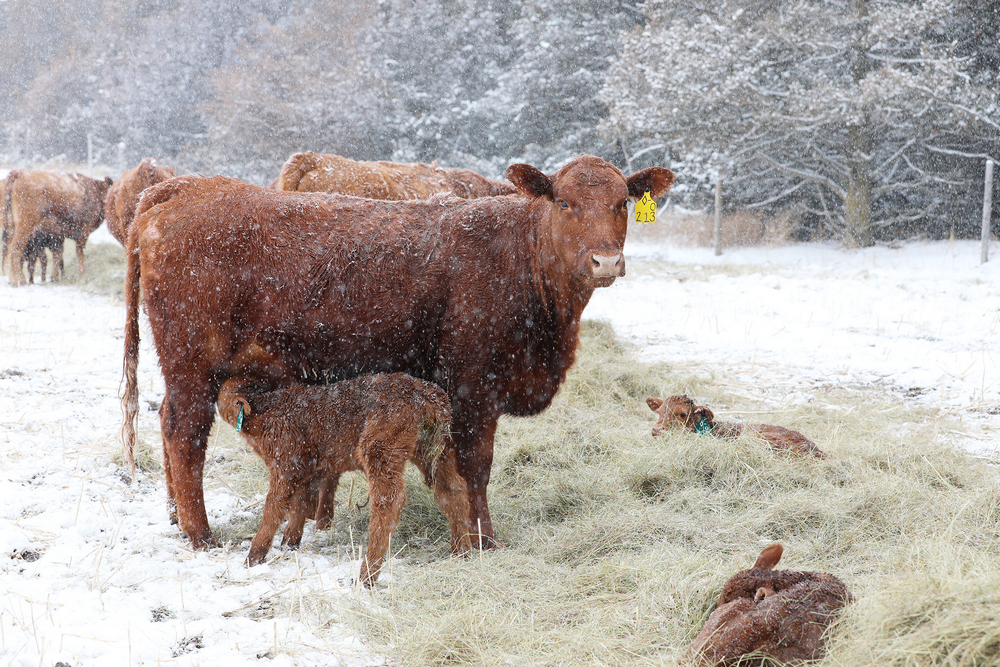![]()

By Karla Wilke Cow-calf & Stocker Management Specialist UNL
Most veterinarians recommend vaccinating nursing calves against clostridial, respiratory, and digestive pathogens at two months of age to bolster immunity against those pathogens until the calf can be given another round of vaccinations just prior to weaning, often referred to as preconditioning. Veterinarians, industry consultants, and university personnel often emphasize the importance of proper vaccine handling and administration as being paramount to benefitting from the long proven efficacy of a good vaccination program. However, what is less often emphasized, is setting up the calf to have a good response to that vaccination schedule.
It Starts with the Cow
Immunoglobulins
Unlike humans, cattle do not get immunity across the placental wall. All immunity calves receive from the dam has to come through the colostrum, which is the first milk the cow produces. Cows need to have adequate nutrition during the third trimester of pregnancy to produce high quality colostrum. Research has shown that calves born to cows in a body condition score 5 or 6 (1-9 scale) have more immunoglobulin G in their blood serum after consuming colostrum than calves from cows in a 4 or less. Immunoglobulins are critically important for the calf to mount a defense against pathogens.
Nutrients
A lot of emphasis has been placed on immunoglobulins in colostrum, and rightly so. However, colostrum has also been shown to have greater concentrations of protein, fat, both fat-soluble and water-soluble vitamins, and both macro- and micro-minerals than milk taken 3 days post-calving. Proper nutrition plays a large role in the health and well-being of calves, and since the calf was once receiving nutrition through the umbilical cord and must now develop a digestive system, it stands to reason the first meal must be very nutrient dense. While cows can pull some nutrients from tissue storage, some nutrients must come from her feed to produce adequate colostrum, making the nutrition in her diet critical for the success of the calf. A vigorous calf at birth gets up and consumes that very important first meal within the first hour of life. Cows who are thin and have not been able to properly partition nutrients to fetal development often give birth to calves who are weak and slow to get up and nurse. Coupled with poor colostrum quality, this calf is not being set up well for success.
Managing the Environment
In many regions where spring calving occurs, the weather can be cold and wet. These conditions can encourage pathogen growth, and in confined areas such as calving lots, pathogen loads can increase rapidly. When a calf is stressed because of the weather and muddy lot conditions, their immune system is challenged. Pathogen loads can be minimized by cleaning pens before calving, moving pairs away from pregnant cows, keeping pairs in groups by calf age in two-week age intervals, and providing a place for calves to rest away from cows. Calf sheds can also be a very beneficial place for calves to stay as dry and warm as possible during storms and cold snaps.
Vaccines are not a Substitute for Proper Nutrition and Management
Vaccines are designed to give the calf a small dose of a pathogen to challenge their immune system to mount a defense against that pathogen so they can stay healthy as they get older. A calf who has an already challenged immune system due to poor environmental conditions or an underdeveloped immune system due to poor nutrition will not benefit much from a vaccine.
Getting the Most out of Vaccine Protocols
Calves born to healthy dams in a moderate (5 or 6) body condition score (on a 1-9 scale) have a better chance of consuming high quality colostrum soon after birth which improves their chances of developing a strong immune system.
Calves in cleaned, well maintained calving areas or pens with age appropriate herd mates and shelter from the elements have less stress on their immune system than calves in wet cold pens with no place to get out of storms.
Properly stored and administered vaccines work best in healthy calves whose immune systems are strong and prepared to respond to the vaccinations.
This article was written for and ran in the Cattle Progressive Setting up the newborn calf to respond to spring vaccinations | Ag Proud.
